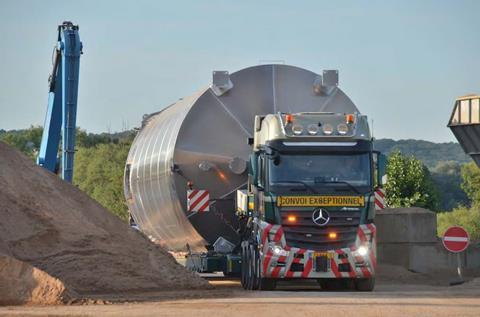ESTA said that long-standing proposals for reform and harmonisation of the rules governing heavy transport and abnormal loads throughout the European Union (EU) have passed a crucial hurdle.

The European association of abnormal road transport and mobile cranes (ESTA) understands that the revisions include the long-awaited Europe-wide adoption of the standard Special European Registration for Trucks and Trailers (SERT) documentation for abnormal load vehicle registration – a move that ESTA has supported for many years.
The proposals were contained in the revisions to the EU’s Weights and Dimensions Directive (96/53) which were before the Transport and Tourism (TRAN) Committee of the European Parliament. At its meeting on February 14, the TRAN Committee backed the revisions with 26 votes in favour, 11 against and one abstention. The final text will be published in the coming days, said ESTA.
The revisions are now expected to be ratified by the full European Parliament by April before going into a process of consultation between the European Council, Parliament and Commission.
SERT is intended to reduce the paperwork and bureaucracy faced by the industry. It formed part of the European Best Practice Guidelines for Abnormal Road Transport, first published in a European Commission Transport Directive back in 2005 but only adopted by a small number of member states. Other proposals slated for adoption include:
• a ‘one stop shop’ per country for permits
• standardised permit application forms
• use of electronic permits
• harmonisation of escorting rules and vehicle markings
• a ban on language requirements for drivers
• permitting systems to be available in all EU languages.
ESTA explained that the Weights and Dimensions Directive sets maximum authorised dimensions of heavy-duty vehicles (HDVs) used in national and international commercial transport and the maximum authorised weights of HDVs used in international commercial transport. If accepted in full, the newly revised directive will also require EU member states to have a single access point for all information regarding national maximum authorised dimensions and weights of vehicles, as well as any restrictions, including on height, in specified areas or on specific roads.
It would also commit the European Commission to establish a web portal that would contain all the above information about heavy and abnormal transport regulations, along with details of routes that can be used by vehicles transporting indivisible loads.
ESTA director Ton Klijn said: “We are pleased with the progress we have made in recent months, but there is a long way to go yet before our proposals are adopted. There is a lot of work still to do. The importance of the heavy transport industry to Europe’s economy as a whole is at last being recognised by at least some of our politicians and regulators. But in parallel with improved and more efficient regulation, we also need a focussed, substantial and committed programme of infrastructure investment.”
















